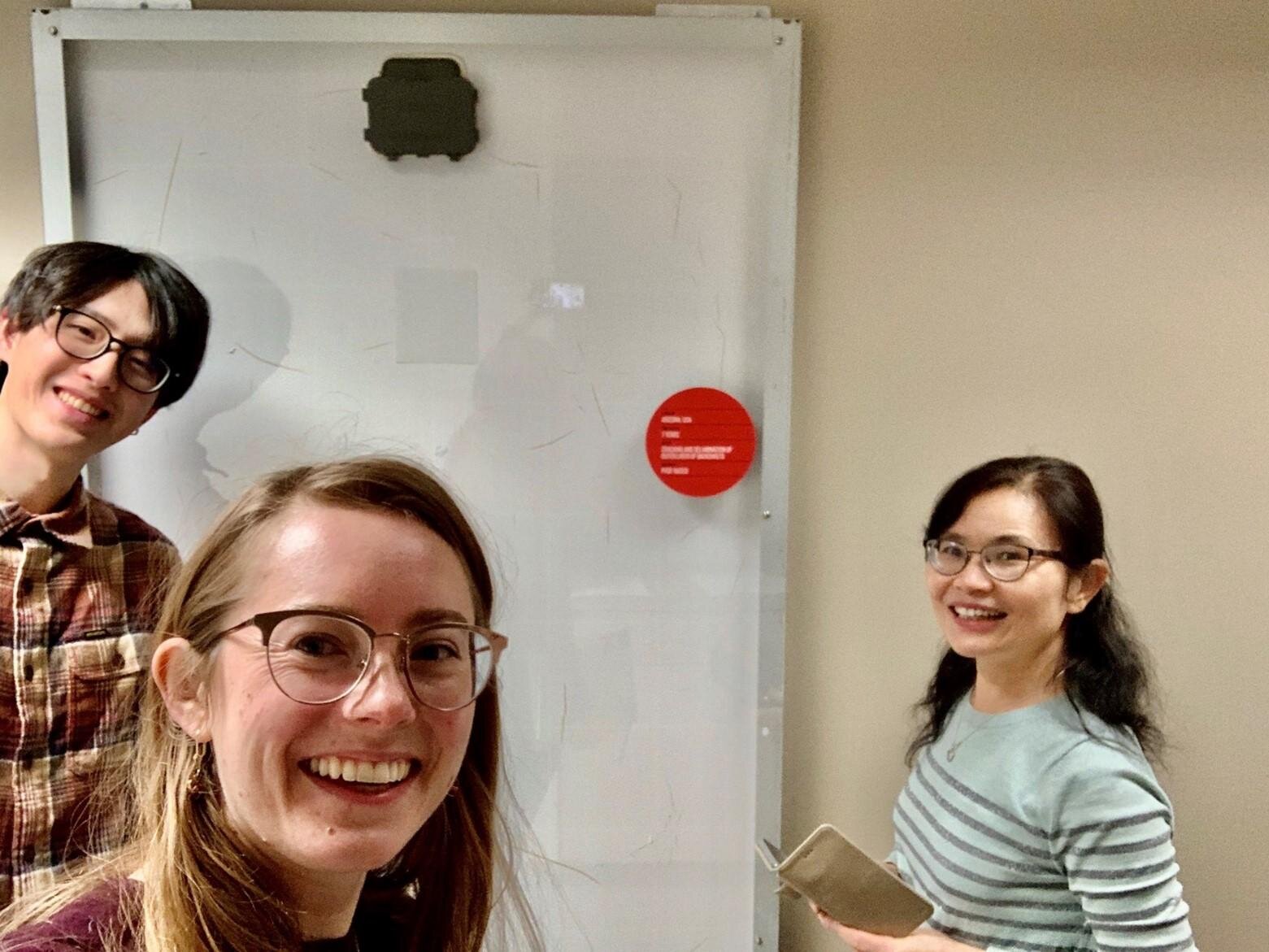by National Institute of Standards and Technology

Examining Solar Panel Materials at the Microscale: Before making the investment in an array of solar panels, potential buyers may wonder: How long will the technology last before it breaks down?
That’s just what a team of NIST researchers—including Stephanie Moffitt, Po-Chang Pan and Xiaohong Gu (shown here)—set out to understand.
Nowadays, 30- to 35-year warranties are the norm for commercial solar panels, but there are concerns that some solar panel materials can show cracks and fail earlier.
For their tests, the team members used multiple accelerated weathering protocols to simulate aging in the field, exposing their samples to stressors such as heat, humidity and ultraviolet light. They also had samples taken from a solar panel field in Arizona after seven years, which is when the panels started to show cracks.
They found that cracks could form in the backing material (backsheets) of panels using a type of polyvinylidene fluoride (PVDF) polymer as a laminate, specifically when:
- The polymer is mechanically stressed (pulled or stretched) in a specific direction, which weakens the crystalline structure of the material.
- The outer layer is blended with acrylic polymers and pigments, which leads to chemical degradation that produces surface pits. The backsheet then cannot withstand strain, and the pits cause micro-cracks.
Using microscopy techniques, the researchers also discovered a change in a backsheet material’s crystalline structure that happens during cracking. That structure transitions from alpha to beta phase, meaning the polymer chains begin packing in a more aligned formation.
In short, the team found that not all PVDF-based backsheets behave the same, and lumping them all together may oversimplify the situation.
In many cases, backsheet cracking can be a huge problem for solar panel vitality, and it doesn’t have a widespread, simple fix. Panels with severe cracking require a complete replacement. But this sort of research provides more insight into the problems so that manufacturers can make more informed choices about materials for more reliable products.
Examining Solar Panel Materials at the Microscale: Original Article














